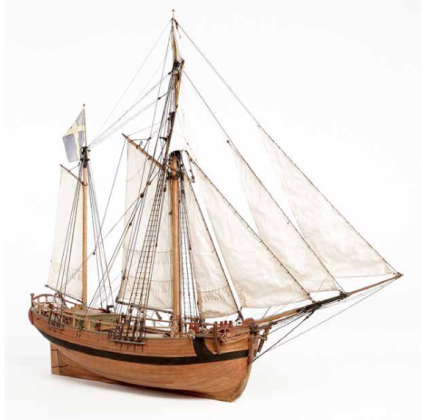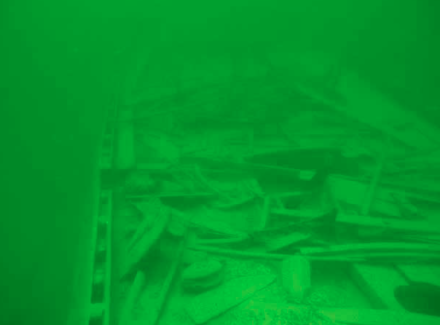History
Wreck found by a minesweeper
In 1995, a wreck was found by the Swedisch minesweeper Koster near Älvsnabben island in the southern Stockholm archipelago. The wreck was named after the ship that found it, which at the time was searching for a missing exercise torpedo in the area.
The fact that the ship had two masts and a transom suggested that it was a galleas. In the early 2000's, research was done by archaeologists with the aid of sports divers. The wreck was mapped and artefacts and parts of the cargo were recovered. This, combined with a dendrochronological analysis, led the researchers to believe that this wreck was the Concordia, uprooting an older theory by Christian Ahlström who believed that the nearby Älvsnabben wreck was the Concordia.
The ship type (galleas), dating, size and cargo (barley and wheat) all point to the Concordia, whereas the Älvsnabben wreck was a galiot, quite a different ship type.

The historian Christian Ahlström had searched in the archives after shipwrecks in the area around Älvsnabben. Ahlström had the task of identifying the Älvsnabben wreck. Despite that none of the various shipwreck records he found in the archives really matched the Älvsnabben wreck he judged that the wreckage could be identified as the galiot Concordia, even though the ship type did not match (Ahlström 1995:109f). This one theory has since been cemented among sport divers, be it probably false.
Description

Status
The wreck lies at a depth of 35 metres and is very well preserved. An anchor lies on the bottom next to the wreck along with what remains of the rigging. The transom has fallen off, showing ornate furniture in the interior of the aft cabin. Parts of the rigging, along with the remains of a dinghy, lie over the large cargo hatch.
The deckhouse where the crew lived has collapsed, exposing its contents. The remains of a bricked galley with wooden cladding are still visible, next to what was once the front wall of the deckhouse.

The cargo consisted of grains, barley and wheat - consistent with the cargo list of the Concordia.
The Koster wreck’s dating to the 18th century is also confirmed by dendrochronological analyses. This reveals that it was built from timber from trees felled sometime during the period 1752–1767 in Northern Germany or Denmark.
References
- Digitaltmuseum.
koster wwreck. - HÅKAN ALTROCK.
KOSTERVRAKET MARINARKEOLOGISK FORSKNINGSUNDERSÖKNING. - GÖRAN EKBERG.
KOSTERVRAKET VÅRD- OCH SKYDDSPLAN. - VRAK.
Älvsnabbenvraket - with rye and oats in the cargo. - VRAK.
Kostervraket - Probably Concordia. - Christian Ahlström (1997).
Looking for Leads.
Helsinki.